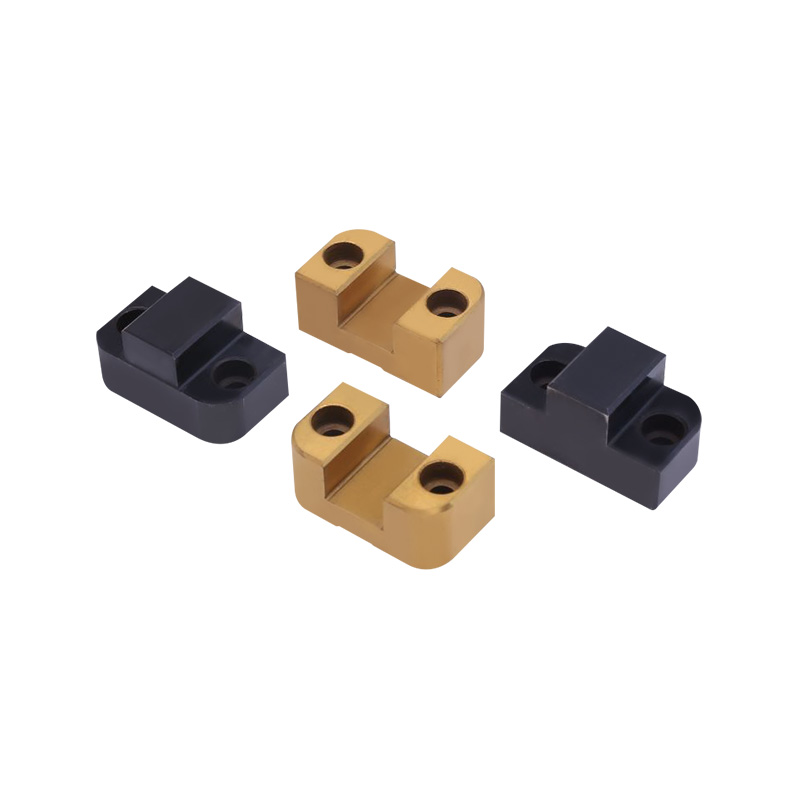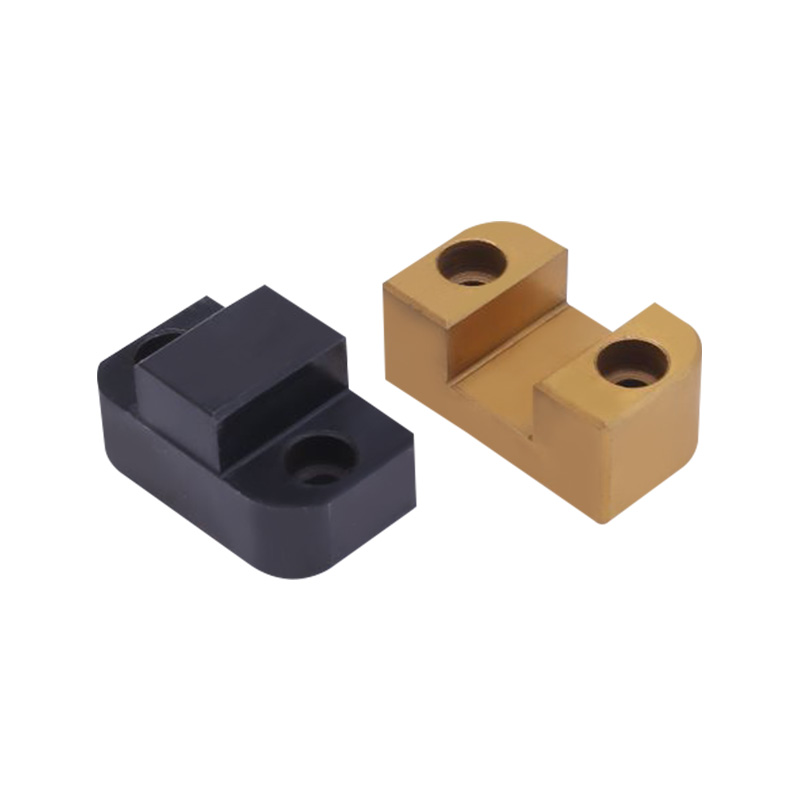Email: [email protected]
Precision Positioning Block: Installation and Usage Guide
In the realm of precision engineering and manufacturing, the Precision Positioning Block stands as a crucial component for achieving high - accuracy positioning. Whether you are working on intricate mechanical assemblies, precision machining setups, or automated production lines, the correct installation and utilization of a Precision Positioning Block can significantly enhance the repeatability and accuracy of your processes. This article will provide a comprehensive guide on how to install a Precision Positioning Block correctly, whether it can be adjusted after installation, the necessary tools and fixtures for proper installation, and tips to ensure repeatable and accurate positioning.
Correct Installation of a Precision Positioning Block
The step in utilizing a Precision Positioning Block is its correct installation. Proper installation is essential to ensure that the block functions as intended and maintains its precision over time. Here are the key steps to follow:

Surface Preparation: Before installing the Precision Positioning Block, ensure that the mounting surface is clean, flat, and free from any debris or contaminants. Any irregularities on the surface can affect the positioning accuracy of the block. Use a fine - grit sandpaper or a surface grinder to smooth out any imperfections if necessary.
Alignment: Carefully align the Precision Positioning Block with the desired position on the mounting surface. It is often helpful to use a straight edge or a laser alignment tool to ensure that the block is perfectly parallel or perpendicular to the required axis. This alignment is critical because any angular deviation can to significant positioning errors downstream.
Fixturing: Once the Precision Positioning Block is aligned, use temporary fixturing to hold it in place. This can be achieved with clamps or magnetic fixtures, depending on the material of the mounting surface. The temporary fixturing should be secure enough to prevent any movement of the block during the final fastening process.
Fastening: With the block securely held in place, proceed to fasten it permanently. This typically involves drilling holes through the Precision Positioning Block and into the mounting surface, followed by the insertion of precision - ground bolts or screws. It is important to use the correct size and type of fasteners specified by the manufacturer to avoid any stress or deformation of the block.
Torque Control: When tightening the fasteners, use a torque wrench to apply the recommended torque values. Over - tightening can cause the Precision Positioning Block to warp or shift, while under - tightening may result in instability. Following the manufacturer’s torque specifications ensures that the block remains securely and accurately positioned.
Adjustability of Precision Positioning Block after Installation
One of the significant advantages of a Precision Positioning Block is its adjustability. Even after installation, you may need to fine - tune the position of the block to accommodate changes in the process or to correct any minor deviations that may have occurred during installation. Here are some considerations for adjusting a Precision Positioning Block after installation:
Adjustment Mechanisms: Many Precision Positioning Blocks come with built - in adjustment mechanisms such as micrometers or screws. These allow for precise linear or angular adjustments. Before making any adjustments, familiarize yourself with the specific mechanisms on your block and their operating range.
Tool Requirements: To make adjustments, you may need specialized tools such as Allen wrenches or spanners that fit the adjustment screws on the Precision Positioning Block. Ensure that these tools are of high quality and the correct size to avoid any damage to the adjustment mechanisms.
Incremental Adjustments: When making adjustments, it is to do so in small increments. This allows you to closely monitor the effect of each adjustment on the positioning accuracy. After each incremental change, re - measure the position of the block to ensure that it is within the desired tolerance.
Re - fastening: After making adjustments, it may be necessary to re - fasten the Precision Positioning Block to ensure that it remains secure in its new position. Always follow the same torque control procedures as during the initial installation to prevent any issues.
Tools and Fixtures for Proper Installation
To achieve a proper installation of a Precision Positioning Block, having the right tools and fixtures is essential. Here are some of the key items you will need:
Alignment Tools: As mentioned earlier, alignment tools such as straight edges, laser alignment systems, or digital levels are crucial for ensuring that the Precision Positioning Block is correctly oriented on the mounting surface. These tools help to achieve the high - precision alignment required for accurate positioning.

Surface Preparation Tools: For preparing the mounting surface, you may need tools like surface grinders, sanders, or scrapers. These tools help to create a smooth and flat surface that is free from any defects that could interfere with the positioning accuracy of the block.
Fastening Tools: A set of high - quality drill bits, precision - ground bolts or screws, and a torque wrench are essential for the fastening process. Using the correct fastening tools ensures that the Precision Positioning Block is securely mounted without causing any damage or deformation.
Temporary Fixturing: Clamps, magnetic fixtures, or other temporary holding devices are necessary to keep the Precision Positioning Block in place during the alignment and fastening process. These fixtures provide the stability needed to prevent any movement of the block while it is being installed.
Measurement Tools: To verify the positioning accuracy of the Precision Positioning Block, you will need precise measurement tools such as digital calipers, micrometers, or coordinate measuring machines (CMMs). These tools allow you to measure the position of the block with high accuracy and ensure that it meets the required tolerance specifications.
Ensuring Repeatable and Accurate Positioning
Achieving repeatable and accurate positioning with a Precision Positioning Block is the ultimate goal of proper installation and adjustment. Here are some tips to help you maintain the level of positioning accuracy:
Regular Calibration: Periodically calibrate the Precision Positioning Block to ensure that it maintains its accuracy over time. This involves checking the position of the block against known standards and making any necessary adjustments. Regular calibration helps to identify and correct any deviations that may have occurred due to wear and tear or other factors.
Environmental Control: The environment in which the Precision Positioning Block is used can have a significant impact on its accuracy. Factors such as temperature, humidity, and vibration can all affect the positioning of the block. Where possible, control these environmental factors to minimize their impact on the block’s accuracy.
Maintenance: Proper maintenance of the Precision Positioning Block is essential for ensuring repeatable and accurate positioning. This includes cleaning the block regularly to remove any dirt or debris that may interfere with its operation, lubricating moving parts as specified by the manufacturer, and inspecting the block for any signs of wear or damage.
Quality of Components: When using a Precision Positioning Block, ensure that all associated components such as fasteners, adjustment mechanisms, and mounting surfaces are of high quality. Low - quality components can introduce errors and reduce the overall positioning accuracy of the system.
Documentation and Record - Keeping: Keep detailed records of the installation, adjustment, and calibration processes for the Precision Positioning Block. This documentation can be invaluable for troubleshooting any issues that may arise and for maintaining consistent positioning accuracy over time.
The Precision Positioning Block is a vital tool for achieving high - precision positioning in a variety of applications. By following the correct installation procedures, utilizing the appropriate tools and fixtures, and taking steps to ensure repeatable and accurate positioning, you can maximize the effectiveness and reliability of this essential component. Whether you are working on a complex manufacturing process or a precision - oriented engineering project, the Precision Positioning Block can help you achieve the level of accuracy and consistency.
Get in touch
Related recommendations
